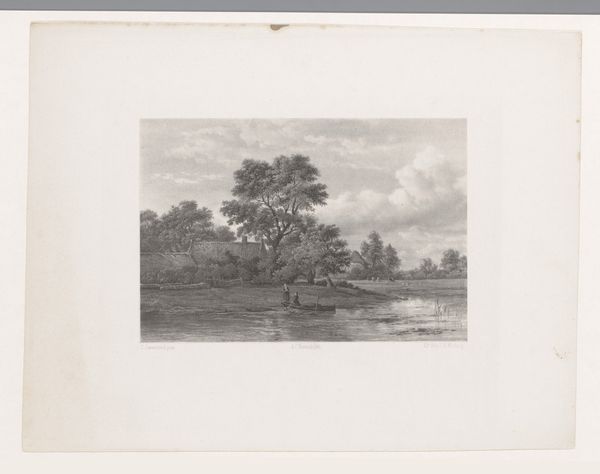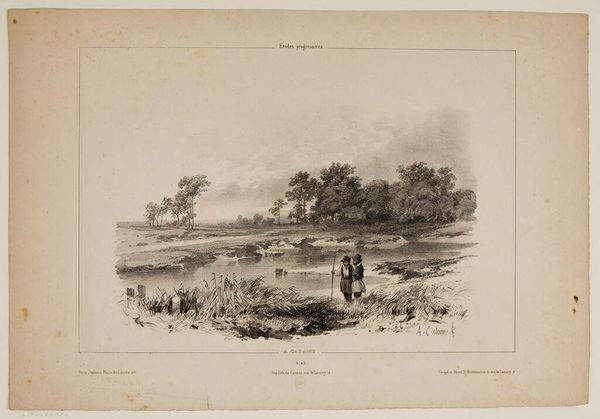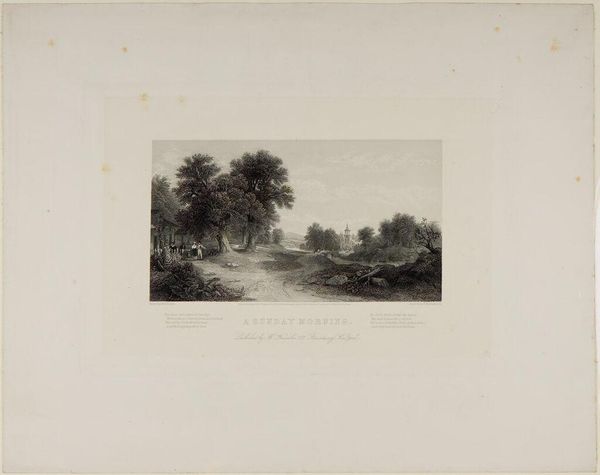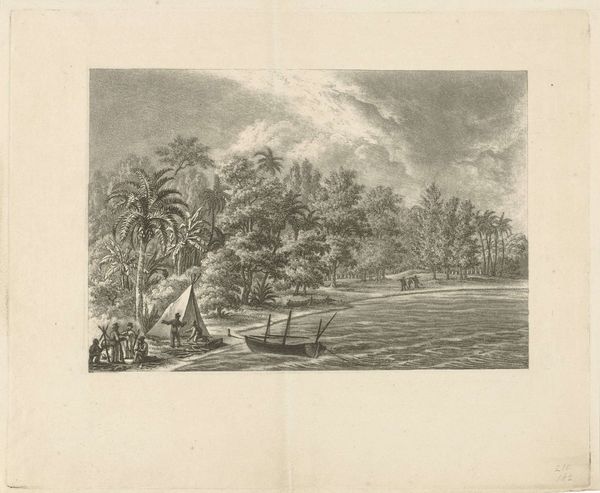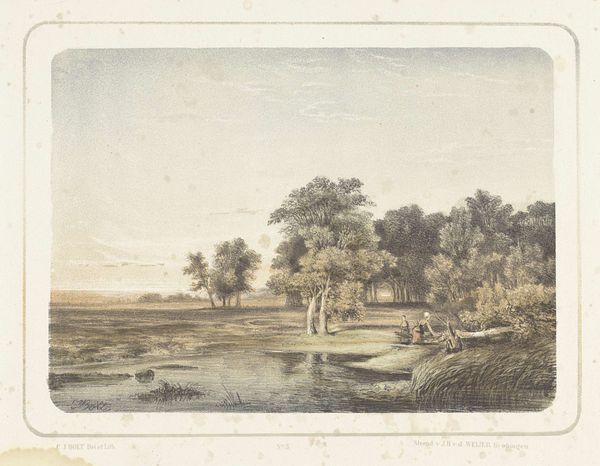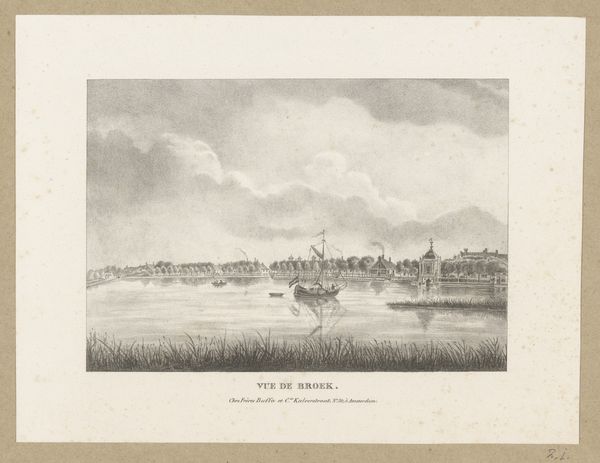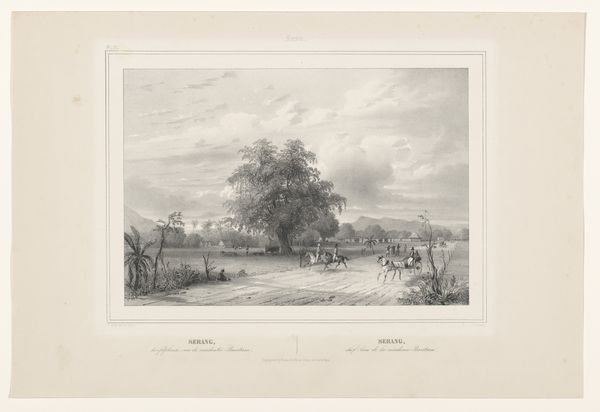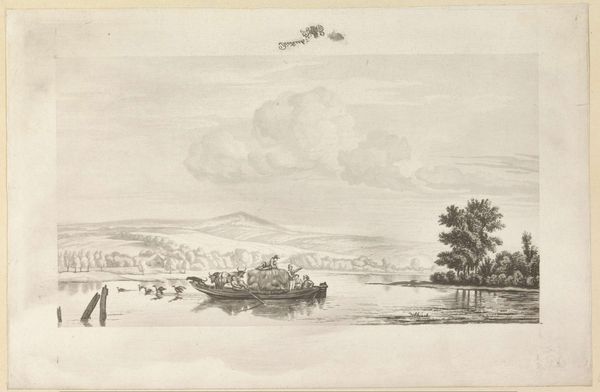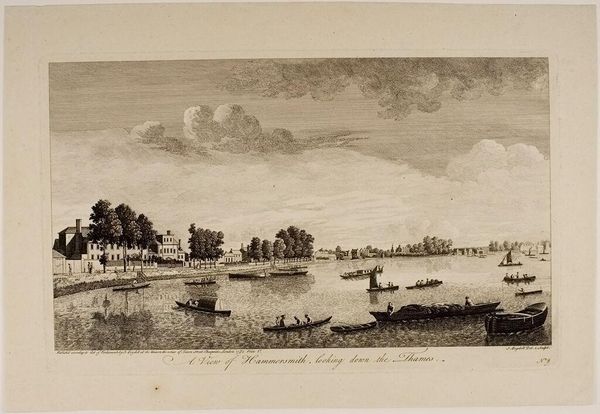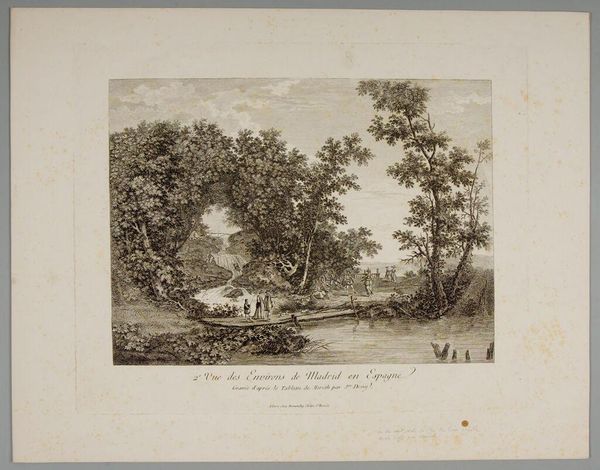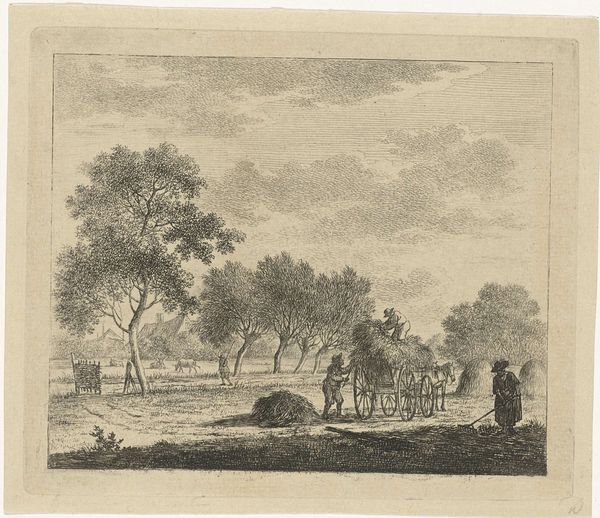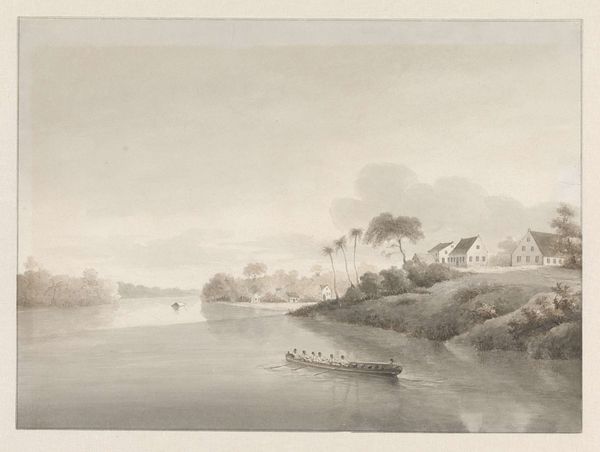
drawing
#
drawing
#
landscape
#
romanticism
#
realism
Dimensions: height 315 mm, width 390 mm
Copyright: Rijks Museum: Open Domain
Editor: This drawing, “Gelders landschap,” by Gerhardus Fredericus Eilbracht, made sometime between 1826 and 1854, captures a seemingly simple landscape. The composition evokes such tranquility. What key symbolic features can we unravel in it? Curator: It's fascinating how seemingly simple landscapes can resonate with cultural and historical memory. Look closely at how Eilbracht positions the cattle within the river; isn't it reminiscent of classical pastoral scenes? Think of those scenes, frequently idealized, as a stand-in for national identity or a shared sense of place. The muted tones and delicate lines emphasize a sense of nostalgia and connection to the land. Does the landscape mirror a larger narrative about belonging, do you think? Editor: I hadn’t considered the cows in the water as deliberately echoing classical pastoral themes. I was more focused on their everyday existence. Curator: Everyday existence in art can be potent symbol too, speaking to universal experiences and human connection with nature, the enduring rhythms of life… what do you think the human figures and their interaction with the animal signifies here? Editor: Perhaps an assertion of dominion – or of partnership with nature and livestock? The dog seems very friendly! Curator: Precisely! The layering of symbols, both grand and intimate, invites reflection on our complex relationship with our environment and with our own history, making Eilbracht's work not just a landscape, but a cultural statement. Editor: Seeing those layered meanings definitely enriches the piece beyond its serene surface. Thanks!
Comments
No comments
Be the first to comment and join the conversation on the ultimate creative platform.
